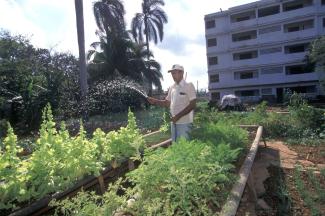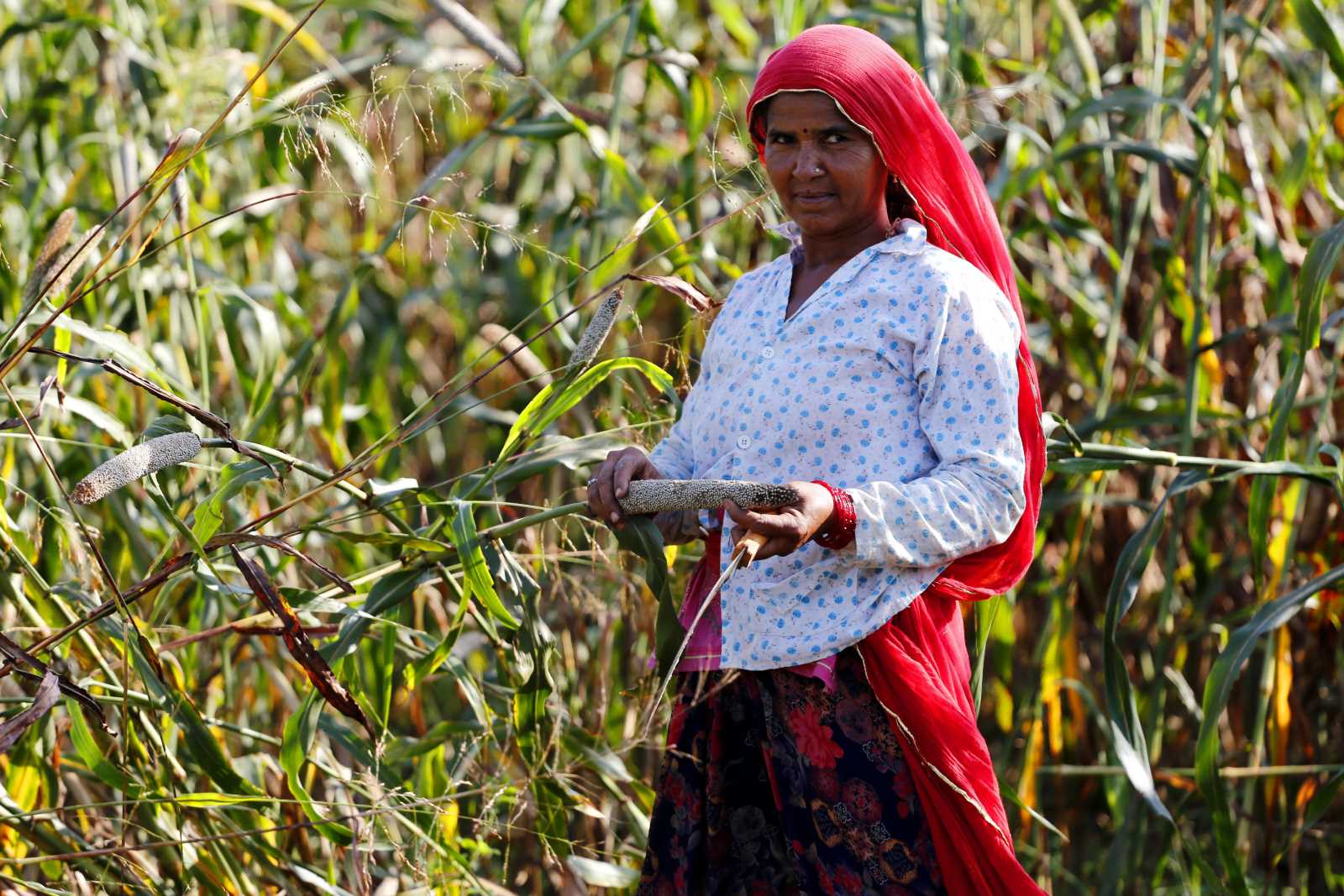Food security
Pioneering urban agriculture

Cuba had to cope with an imminent food crisis in the early 1990s. Organically grown urban agriculture was simply the most promising remedy. The communist government cooperated with grassroots organisations, providing incentives to urban people to grow and market food locally. This bottom-up approach was not typical of authoritarian rule.
The reform allowed people to decide what they wanted to cultivate, and land-use management was reorganised accordingly. A free market for urban produce emerged. Local communities were empowered to make decisions regarding the formerly nationalised food economy, and administrative functions were decentralised.
Since the Cuban example in the 1990s, urban gardening has taken root in many cities around the world. Every city and country has a unique system. Cuba was a frontrunner, and it shows how great the potential of small-scale, organic gardening is.
Throughout the 20th century, Cuba’s political economy and food system changed drastically several times. The revolution of 1959 brought the communist government to power, which centralised the state apparatus. All agricultural land was nationalised and farms were mechanised.
In the cold-war era, the USA imposed a trade embargo on Cuba. As a result, the country developed a symbiotic trading relationship with the Soviet-led Eastern Bloc, to which Cuba exported tropical products like sugarcane, tobacco and fruits at nearly twice the world market price. In exchange, it got fuel, animal feed, cereals, meat and other products at subsidised rates. By the 1980s, Cuba was importing 57 % of its food as well as 90 % of its agricultural fertilisers and pesticides. The advantageous exchange with the Eastern Bloc allowed Cuba to prosper, and the 1980s were subsequently referred to as “the years of the fat cow” in Cuba.
In 1989, the Berlin Wall came down, and then the Soviet Union disintegrated in 1990/91. Cuba suffered an economic shock because the trade patterns changed dramatically. Cuba lost 80 % of its food trade, resulting in serious food shortages. On average, people only got two thirds of the calories they needed. Cubans call that time the “special period of hunger”.
In response, the government introduced radical reforms. The previous paradigm was industrial-scale farms run by the state and geared to producing commodities for exporting. By contrast, the new ideal was to source local produce, coping without costly inputs such as fuel and fertilisers. The government changed land-use regulations and instituted market reforms in order to stimulate a local economy for food. It relied on expertise it had previously not considered, including the traditional knowledge of the elderly as well as scientific advice on eco-friendly farming. The goal was to adapt food production to the new geo-political situation. Organic farming methods were widely adopted, including composting, crop rotation, soil conservation, et cetera.
Farming in Havana
Havana is a city of about 2 million people. It is not densely populated, and its geography and climate proved ideal for urban gardening. In view of the failing economy, the Ministry of Agriculture initiated urban agriculture units to produce food and provide new employment opportunities.
Until the 1990s, 80 % of Cuba’s agricultural land – including cattle production sites – had belonged to large-scale state farms. Only 20 % was under the care of small-scale farmers. At that time, agriculture was marked by monocultures, heavy mechanisation, irrigation and intensive use of chemicals. Workers were organised in teams with each farmer being strictly designated to one task.
This model became unviable after the collapse of the Soviet Union as Cuba lost access to the crucial inputs it had imported. The government therefore switched to self-managed food production at the local scale. In 1991, the Department of Urban Agriculture’s motto was “production in the community, by the community, for the community”. Farmers were given the responsibility for the entire production on one plot of land. Remuneration became directly linked to output.
To distribute land to small farmers in urban areas, the Department of Urban Agriculture collaborated with participatory neighbourhood-level governments called “Poder Popular”. The precondition was that they produced food. In Havana alone, the authorities allotted 25,000 gardens to families for farming purposes. Moreover, dozens of large “organiponicos” were established. Organiponicos are high-yield urban market gardens, ranging in size from 200 square metres to a few hectares. Five or six workers cultivate them relying on organic methods.
By discontinuing the state farms and installing cooperative farming at the grassroots levels, Cuba managed to turn over four-fifths of its state-owned farmland to the workers. Each subunit of the newly formed cooperatives elected a leader democratically. The leader’s job is to oversee the farm activities. The duties included drafting production plans, training the farmers in urban agriculture and promoting new technologies. The cooperative leaders also served as representatives to the Ministry of Agriculture.
Authority over agricultural production became decentralised. Though the state still technically owned agricultural property and required farmers to meet production quotas, the collectives became the owners of their own food production. Farmers could sell their excess produce in local markets.
Educational campaigns contributed to the development of urban agriculture. The government involved academics in researching organic farming methods and innovations. Moreover, it invited cooperative members to seminars and courses so they could acquire new skills and share their own knowledge with others.
Conclusion
Havana’s agriculture revolution resulted from a food crisis. Growing food even in the capital city was a tool of crisis management, and it provided a viable solution to the daunting problem. In 1995, the government declared that the food crisis was over. By 1996, urban agriculture provided the city with 8,500 tons of agricultural produce, 4 million dozens of flowers, 7.5 million eggs and 3,650 tons of meat.
The example of Cuba shows that urban gardening can boost food security substantially. It is not always an issue of national policymaking, however. Local communities can improve their fate by resorting to home-grown produce, not least with an eye to getting a fresher and more vitamin-rich diet. International research shows that people in low-income neighbourhoods tend to lack access to fresh foods. Community-oriented urban agriculture can make a difference, whether it is promoted by the national government or not.
A local farming approach, moreover, makes people less dependent on the world market. Both traditional local knowledge and appropriate innovations can give people more control of their lives even in our era of globalisation.
Katie Cashman is an urban law consultant with UN-Habitat (United Nations Human Settlements Program) based in Nairobi. She wrote this contribution when she was still a post-graduate student of urban management at Technische Universität Berlin. The masters programme she took part in is part of AGEP, the German Association of Post-Graduate Programmes pertaining to international development.
kcashman23@gmail.com












